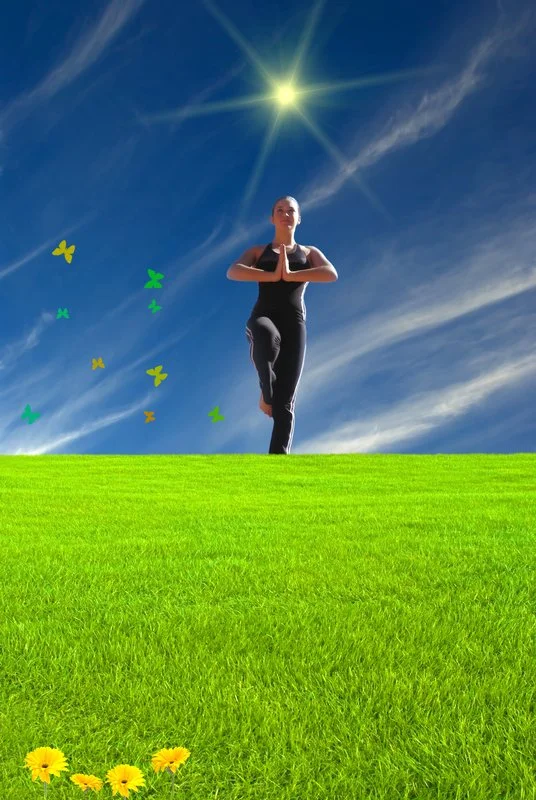Transitions as Templates in Yoga and Life: Spring to Early Summer
Transitions are Times of Great Potential
Life is one, great symphony of transitions. Rhythms are built of transitions. Yoga happens in transitions. Right now, early May, we are in a transitional period called Rtu Sandhi in Sanskrit, or “the part where two seasons join together.”
Quality of This Time and Effects On Our Daily Routines
During these interstitial times we’re not only incorporating the new asana, pranayama and meditation practices for the next season (in this case, Early Summer), but also paying attention to what falls away: the newness of Spring: the cold and potential stagnation of Winter. We’re soaking in the verve that comes from the rising sap with all the cold brakes taken off, the pushing up and through and the glory of the days where sunshine surprises and enlivens us and everything seems to be flowing and flowering.
The care with which we observe transitions is a meditation that carries over to everyday life where we are always transitioning: from task to task, from role to role, from mood to mood and from one part of life to another. Our yoga practice is an opportunity to reconnect to this meditation daily in an intentional way. The awareness we generate even in small doses carries through the day ahead, one day building on the one before in a way that gently creates breakthroughs that ripple through our lives.
We Also celebrate Mother’s Day in this time, a role that is all about supporting transitions of birthing and world making, education, play, pretending, setting boundaries and teaching choice and love and respect. Motherhood is about transitioning from creatrix to support, soft place to land, guard rails to observer. Happy Mother’s Day to all who care for, birth and nurture other beings!
Spring Transition to Early Summer
Seasonally, we are transitioning from the tentative breaking through ground of bulb and buds to the riotous explosion of color and vitality they become. We are wrapping up the 6 month emphasis on processes that build and enjoying the flowering that comes from diving underground, rooting and then drawing up through those roots. Early Summer begins the complementary focus: realizing, bringing the fruits into time and space where they are seen and enjoyed… and where things fall apart. In biology this is the complementary cycle catabolism and metabolism, of building and cleaning up. In psychology, the cycles of dis- and -integration. When we cooperate, these movements are less disruptive.
In the Spring, accumulated kapha is mobilized and perhaps aggravated depending on our current constitution. The increasing light creates the conditions for that mobilization, and if we cooperate in beginning to expel excess kapha we have an opportunity to gain energy, a result of increased prana.
How to Change Your Routine and Habits in this time:
To cooperate with this process, here are ideas for each area of your routine (dinacharya) to consider incorporating during this transitional time:
Eat seasonally and focus on cool and cooling foods. The bounty of greens, berries and fruits is just getting started so grab those as your base for 3 meals a day, no snacks. Yogurt is a great addition.
Yoga Practice Tips:
Incorporate backbends (sphinx, cobra, locust, updog, camel, bow, up bow, anjeyanasana).
Counterpose with twists (revolved side angle and triangle, revolved easy pose, twisted dog and pigeon, Marichi’s pose (seated twist with one knee up), laying down twist).
Continue with Sun Salutations and warming breaths before 2pm until and unless you notice they are too activating (warming breaths: kapalabhati or skull shining, bhastrika or bellows. surya bhedana pr right nostril breath).
Start to incorporate the balancing, cooling breaths and focus on them in the evening exclusively (shitali or breathing through tongue straw, shitkari or breathing through teeth, chandra bhedana or left nostril breathing, alternate nostril breathing which you can do any time).
Start to incorporate Moon Salutations, especially in the evenings.
Start to incorporate more Yin and Restorative yoga, either whole practices or at the beginning (yin) and end (restorative) of your practice.
Start to incorporate more Yoga Nidra, Mudras and meditation in your practice.
Images that may be helpful include flowing as in streams, rising as in sap, flowering.
As always….
Consider waking with the sun and adjusting your bedtime to nearer its setting. If you’re having trouble adjusting this timing, get early morning sun and bathe in the light of the moon when you’re up with it.
The best time practice yoga is when you can! Adjust your practice to be more warming in the early day and more cooling later.
Enjoy the return of energy, radiance and vigor!
Conclusion
For the next two weeks, notice how your mind reacts to the in between spaces, the places that are both this and that - or neither this or that. Set an intention to breathe awareness into transitions: taking a whole inhale to expand, a whole, long exhale to return to center; to breathe with discomfort and impatience and notice how not knowing feels (different at different times). How does it feel to acknowledge the not knowing of being human?



